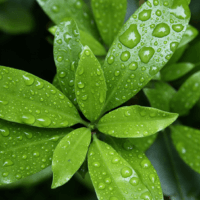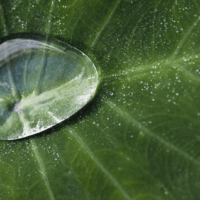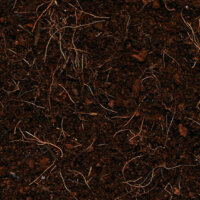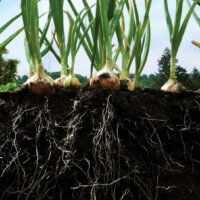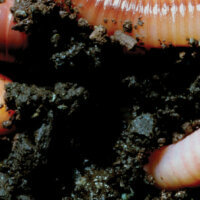Controlled Environment Agriculture, or greenhouse growing where an optimum environment for plants is maintained.
-

Establish and Maintain a Healthy Root Microbiome
Plants consist of several basic organ systems, and roots are an important one. In both soil culture and hydroponics, roots...
-

Five pros and cons of growing organically in a hydroponic system
by Guest Author Annie S. White, Freelance Technical Writer & Horticultural Consultant. The marriage of hydroponics and organics makes an...
-

Foliar Feeding: Nutrients and Beneficial Bacteria
By Derex Q. Zellars | Environmental Scientist Traditional methods used to protect plants from disease have been largely based on...
-

Foliar Spraying
Olympians wear high compression swimsuits that are nothing short of technological marvels. They reduce drag and allow athletes to swim...
Humidity is the measure of the volume of water in the air at a given temperature. Higher humidity (>75%) can lead to slowed growth due to reduced evapotranspiration and can increase the potential for disease that favors high moisture, such as powdery mildew. A circulation fan in the growing room and frequent air exchanges can reduce the amount of humidity in the air which will maintain an ideal environment for plant growth. Low levels of humidity (<20%) can also reduce growth by reducing the amount of moisture around the leaves of the plant which creates a situation of water stress in the plant. Using evaporative cooling or adding a humidifier to your growing environment can increase the level of humidity in the air and maximize the plant’s osmotic potential.
-

Identifying Root Rot in Your Plants
There are several symptoms of root rot and many can often be mistaken for nutrient deficiencies or temperature extremes. What...
-

Kelp
Kelp is a popular plant additive. Understanding what it is and how it benefits plants can help a gardener make...
-

Light
The most essential requirement for growing plants is an adequate source of light. If you grow outdoors, an abundance of...
-

Magic Myc: Q & A on beneficial fungi
How do mycorrhizae help with availability and uptake of essential plant nutrients? Mycorrhizae help increase the availability of essential plant...
-

Nourish your Plants Above and Below with Seaweed
By Derex Q. Zellars | Environmental Scientist Scientific research has confirmed that seaweeds help in increasing yields, drought resistance, frost...
-

NPK: A simple guide
When it comes to indoor and outdoor gardening, it is important to understand the significance of the N-P-K ratio. You...
-

Organics and Minerals: Do you Really Understand What’s Going into your Garden?
Many growers give themselves labels based on the types of inputs they use in their gardens, often referring to “strict...
-

Photoperiodism
Photoperiodism is the physiological reaction of organisms to the length of day or night. EQUINOX: EQUAL DAY AND NIGHT There...
-

Plant Stress Signs and Preventatives
Most growers know to keep an eye out for common plant stressors like insects, diseases, and water and nutrient levels....
-

Selectivity of Plant Nutrient Ion Uptake
The interactions between mineral cations and anions are well understood by chemists, but often overlooked by horticulturists when applying fertilizers...
-

Silica in Hydroponics
Silica is the second most abundant element on earth and plays a vital role in optimizing plant health and yield....
-

Soil Conditioning 101: Better growing through chemistry
At the beginning of every planting season many gardeners begin the ritual of tilling up soil and preparing both new...
The temperature of a growing environment is crucial to maintain optimal growth and maximize the genetic potential of the plant. The ideal temperature will vary given the stage of growth and the type of plant being grown. During vegetative growth, plants are growing very rapidly and can tolerate higher temperatures than during fruiting and flowering. A typical safe range for vegetative plants is 75-80°F during the light (day) period and 55-60°F during the dark (night) period. For fruiting and flowering growth, the temperature range is 70-75°F during the day and 50-60°F during the night period. Monitoring the growing environment with a thermometer that has minimum and maximum temperature logging is a valuable tool to keep track of the fluctuation of temperature throughout the course of the day.
-

Temperature and Humidity
In order to learn how to create the best environment for your particular crop it is helpful to understand how...
-

The pH connection between bacteria and fungi
So, first things first. I’m sure you are wondering, “What kind of person blogs about soil, pH bacteria and fungi?”...
-

The Soil – Blog Part 2
Hey friends! Welcome back. So after the first Soil Blog post, I was all excited telling a friend of mine...
-

The Unseen World of Microbes in Grow Media
In one tablespoon of healthy soil there are as many organisms as there are people on the Earth. Soil microbes...
A frame or netting that supports plants.
-

Unlocking your plants’ potential with air
Just because air cannot be seen, does not mean that it is not a critical element in the growth and...
-

Vermicomposting: Reduce, reuse, recycle with the help of worms
Many of today’s gardeners want to improve their land’s fertility while also supporting green efforts. One option stands out as...
-

Vertical Gardening
The stereotypical garden space is a horizontal, flat, well lit area, and while that configuration is useful in many circumstances,...
-

Vitamins in Plants
We all are familiar with the need for vitamins in the human diet. What about plants, do they require vitamins...
-

Water Quality for Hydroponics
Water makes up as much as 90% of the mass of a plant- even more in some crops, such as...
-

Why Plants Need Sugars and What They Do With them
Plant carbohydrates, in the form of sugars are the energy source by which all plants carry out their major functions....


